The Lord of the Rings, The Battle for Middle-earth II, The Rise of the Witch-King Q&A
Producer Amir Rahimi fills us in on the details regarding this upcoming expansion to The Battle for Middle-earth II, which is set thousands of years before Frodo and the gang.
The rich fantasy setting of J.R.R. Tolkien's The Lord of the Rings served as great material not only for movie director Peter Jackson, but for EA as well. Using the combined book and movie license, EA released The Lord of the Rings, The Battle for Middle-earth II last year. Like many real-time strategy games, The Battle for Middle-earth II let you oversee various factions, such as Gondor, Rohan, and Mordor, and you could manage their economies, grow their cities, and crush their enemies with massed armies. Now, with the Rise of the Witch-King expansion, EA is going back into the distant history of Middle-earth to show us what happened between the Battle of the Last Alliance where the One Ring was lost and the events seen in the movie. For more information, we turned to producer Amir Rahimi. We can expect the expansion to ship sometime next year.
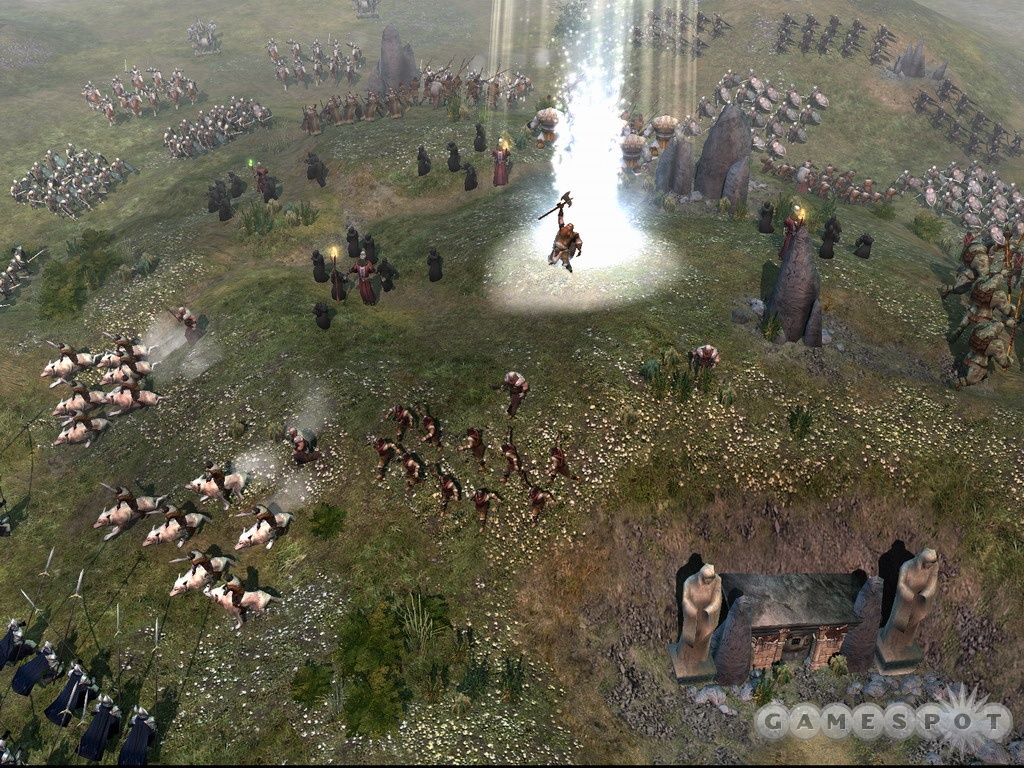
GameSpot: Rise of the Witch-King is set thousands of years before the events of the movies. Why set the game in this time period?
Amir Rahimi: The story behind the Witch-King's rise to power is one of the most important and fascinating events that takes place in the Lord of the Rings trilogy. After 1,000 years of peace, the Witch-King commands the rise of evil in Middle-earth by gathering an enormous army and waging a 500-year war against one of the greatest kingdoms of men. Three thousand years after being defeated at the Battle of the Last Alliance, the Witch-King destroys the great kingdom of Arnorand, clears the way for Sauron to return, and begins his domination of Middle-earth. Given all of this, we decided that telling the Witch-King's story would be the perfect opportunity to bridge the 3,000-year gap in our game, between The Battle of the Last Alliance and the beginning of the War of the Ring that existed in the films.
GS: What's the appeal of the character? And, you can't really talk about the Witch-King without thinking of the other Nazgul, so will they make an appearance as well?
AR: The Witch-King is the most powerful of the nine Nazgul and one of the most powerful evil forces in the history of Middle-earth. In fact, according to the fiction, it was determined that no living man was capable of killing him. He single-handedly established a huge kingdom in Angmar and destroyed the Men of Arnor. Unfortunately, many casual fans only know him as the big scary Nazgul that got his head chopped off at the end of The Return of the King.
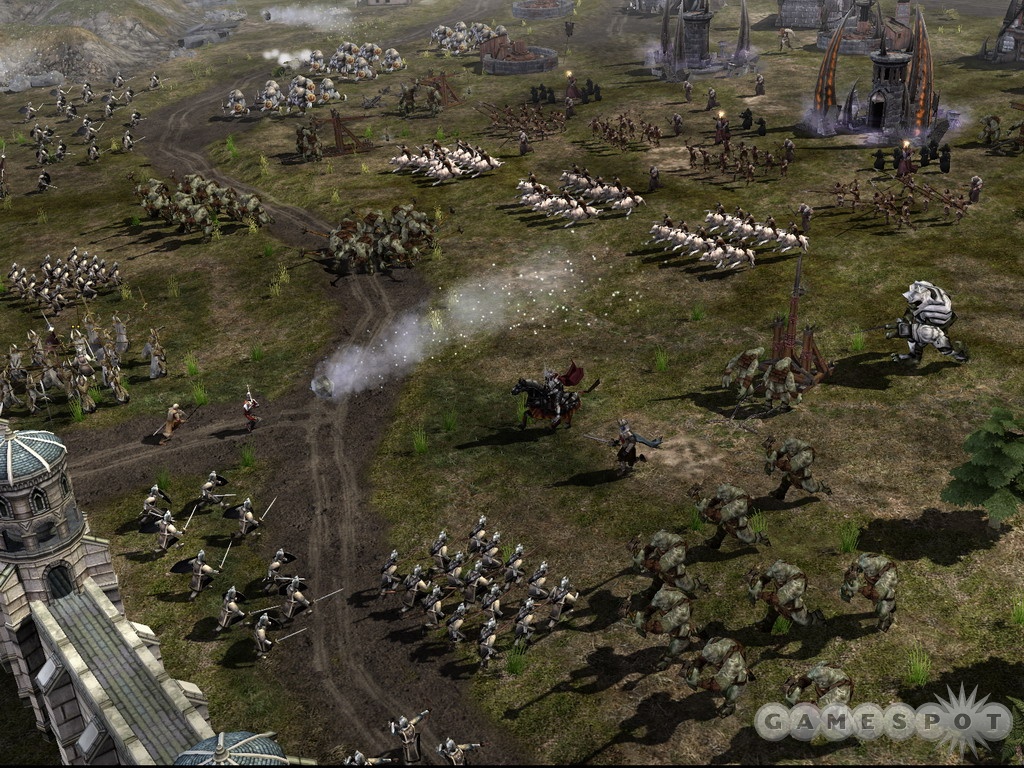
In The Rise of the Witch-King, we will introduce Morgomir, one of the nine Nazgul, and the Witch-King's right hand. If used effectively in the single-player campaign, Morgomir can sway decisive battles in the war against Arnor in favor of Angmar.
GS: The Witch-King leads a new faction known as the Angmar. Could you tell us more about it? We've heard that it's a "slow, strong, powerful" faction that's equivalent to the dwarves, but could you go a bit deeper into what that means? And, from the screenshots, it looks like a faction composed of a mix of different races.
AR: Angmar's buildings and units will be some of the most expensive in the game, but they will also be some of the most powerful. It will have very strong walls and base defenses. One of its major strengths lies in the ability to combine its units and spells in very creative and potentially devastating ways. For example, we introduce a brand-new spell to the game called fell wind. This is a low-level Palantir spell that players can choose as they gain experience during battle. This spell blows extremely powerful gusts of wind from all directions, knocking everyone within its area of effect into a giant clump. If the Angmar player can coordinate the bombarding of his siege weapons and archers in the center of the fell wind's area of effect, he can wipe out entire battalions very quickly.
One of the strengths of the Rise of the Witch-King expansion pack is the way the genesis of the Angmar faction weaves into the storyline of the single-player campaign. The Witch-King dominated the land of Angmar and brought its inhabitants under his heel. Among the inhabitants of Angmar were various types of trolls that were never visualized in the films.

For example, we introduce snow trolls for the first time to fans of the Lord of the Rings universe. These are trolls that have evolved in a cold climate, so they are white in color and have shorter limbs than their cousins that appeared in films. Their lower center of gravity and great strength (particularly in their legs) allow them to run at high speed and trample anything in their way, thus serving as Angmar's elite cavalry unit. Hill trolls, on the other hand, are taller and slower, but are smart enough to be trained to use siege hammers to unhorse enemy cavalry. Evil men, known as the Dark Numenoreans, also inhabit the land of Angmar. These are men who, through intimidation, have forfeited their will to the Witch-King and help him invade Arnor. The Dark Numenoreans have dabbled in the dark arts for centuries, so you can expect them to bring some very interesting powers to battles. Those who have had a chance to play the expansion pack with the Angmar faction really enjoyed it and the Angmar will be one of The Battle for Middle-earth's most diverse and interesting factions.
Siege or be Under Siege
GS: Heroes are a big part of Battle for Middle-earth II's gameplay, but what will you do when you don't have any of the familiar faces to enlist on your side, such as Aragorn, Legolas, and Frodo? Did you have to invent a whole new cast of characters in the game? 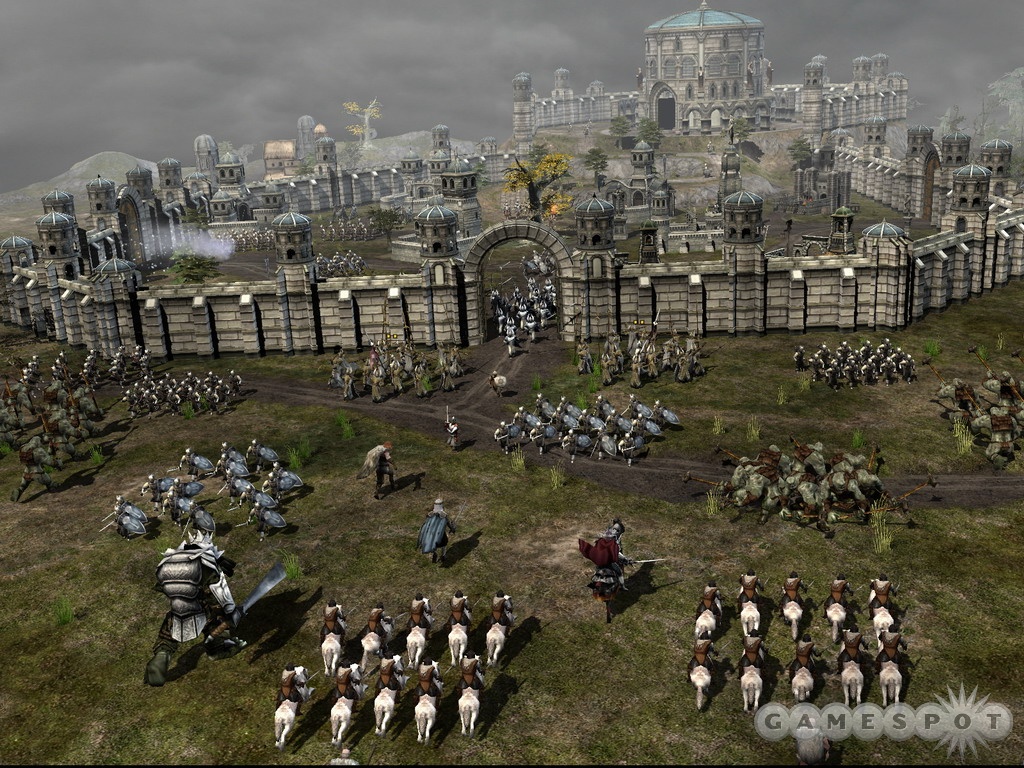
AR: In The Rise of the Witch-King we invent a very interesting and powerful cast of heroes that fight for Angmar. By playing the single-player campaign, the player will get the backstories of these heroes. One of Angmar's heroes was a celebrated captain of Arnor who valiantly defended his kingdom until the Witch-King's lieutenant, Morgomir the Nazgul, stabs him with his Morgul blade. This, of course, causes him to pay a price beyond death: The captain turns into a wraith who is eternally bound to the Witch-King and goes on to terrorize the very people who he sacrificed his life protecting. Another one of Angmar's heroes is Hwaldar, the chief of a large band of hill men in Arnor. Hwaldar incites a massive revolution in Rhudaur, one of the major territories of Arnor. This revolution creates the perfect opportunity for the Witch-King to launch his initial invasion. The Witch-King captures Rhudaur and appoints Hwaldar as its leader. Hwaldar goes on to lead his hill men under the Witch-King's banner and plays a major role in some of the most decisive battles in the war against Arnor.
GS: There's going to be more of a focus on sieges and building elaborate defenses in the expansion than there was in the core game. Are you trying to get back to the epic sieges seen in the original Battle for Middle-earth, such as the Battle for Minas Tirith? How are you going to make players want to build walls rather than build up armies and simply crush opponents? After all, the best defense is a good offense.
AR: One piece of feedback that we've gotten from our fans is that siege warfare was underpowered in The Battle for Middle-earth II. Elite units could easily destroy buildings and were effective against other units. Therefore, in most situations, there was no need to spend thousands of resources on siege weapons. In The Rise of the Witch-King we have rebalanced siege warfare to make it a more viable and interesting tactic. Infantry will no longer be as effective against structures, particularly walls and fortresses. Siege weapons will be faster and less damaging to allied units. Therefore, they will be easier to get across the map in order to destroy an enemy base and more effective as artillery in infantry battles.
GS: Are there any significant improvements to the persistent campaign in Rise of the Witch-King?
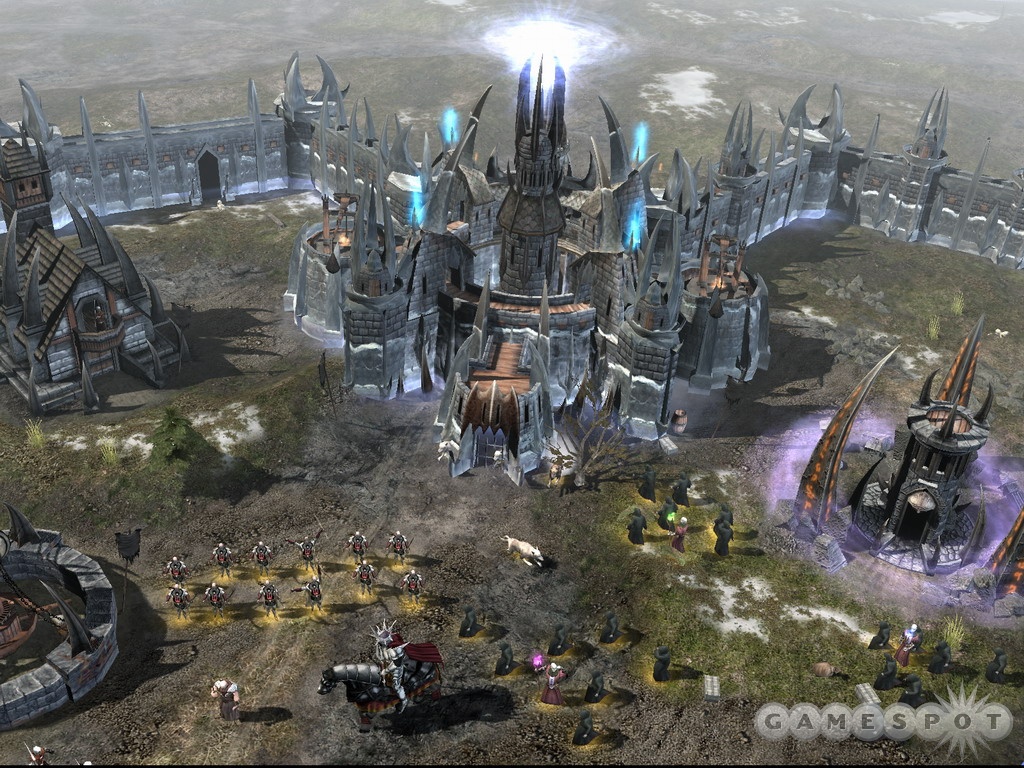
AR: The War of the Ring mode has been greatly improved in several ways. First of all, we've added 14 new territories and battle maps for the player to fight over. We've introduced an economy to the strategic mode that functions similarly to that of the real-time strategy mode. We now allow units that are built in real-time battles to persist in the strategic mode, which really gives the player a sense that he's building an empire one battle at a time. These are only a few of the many big improvements that we've made to the War of the Ring mode.
GS: Will there be a lot of attention paid to the map and the battlefields? Battle for Middle-earth II already had all the territories of Middle-earth in it, but there were many maps that sported ruins of ancient cities. Since Rise of the Witch-King is set thousands of years in the past, will those ruined cities now be thriving towns? Can we expect any significant changes to the existing maps or levels?
AR: We are absolutely paying a lot of attention to the maps and battlefields in The Rise of the Witch-King. Two examples are Amon Sul and Fornost. Many fans of the films will remember Weathertop. This is the lookout tower at which Frodo gets stabbed by the Nazgul in The Fellowship of the Ring. During the time of The Rise of the Witch-King, Weathertop was known as Amon Sul, a mighty stronghold that checked the advance of evil into Arnor for hundreds of years.
In The Rise of the Witch-King, the player will be able to experience Amon Sul in all its glory, and in the single-player campaign the player will be charged with the task of commanding an army that must somehow bring ruin to this great bastion. In The Battle for Middle-earth II, Fornost was a ruined city that made an appearance when the dwarves retreated there and used its mighty earth hammer. During the war against Arnor, Fornost was the heart of Arnor. It was the capitol of Arnor and the ultimate target of the Witch-King's attack.
GS: The campaign focuses in on the Angmar faction, but what can you tell us about the opposing factions? Since the game takes place thousands of years before the events in the movies, these aren't the familiar Rohan and Gondor factions, correct? Will we also see other factions, such as the elves or the dwarves?
AR: The opposing faction in the single-player campaign is Arnor, a kingdom of men in the northwest region of Middle-earth. The kings of Arnor are the ancestors of Aragorn. When Arnor is destroyed by the Witch-King, its royal bloodline is broken, and the survivors are driven into a nomadic existence as rangers. Therefore, when fans of the films watch Aragorn go from being somewhat of a drifter to the king of men, they will now know that he was able to do so because his ancestors, the rightful heirs to the throne, were ousted by the Witch-King. The elves play a major role in helping the men defend their land against the Witch-King and will be featured prominently in the campaign.
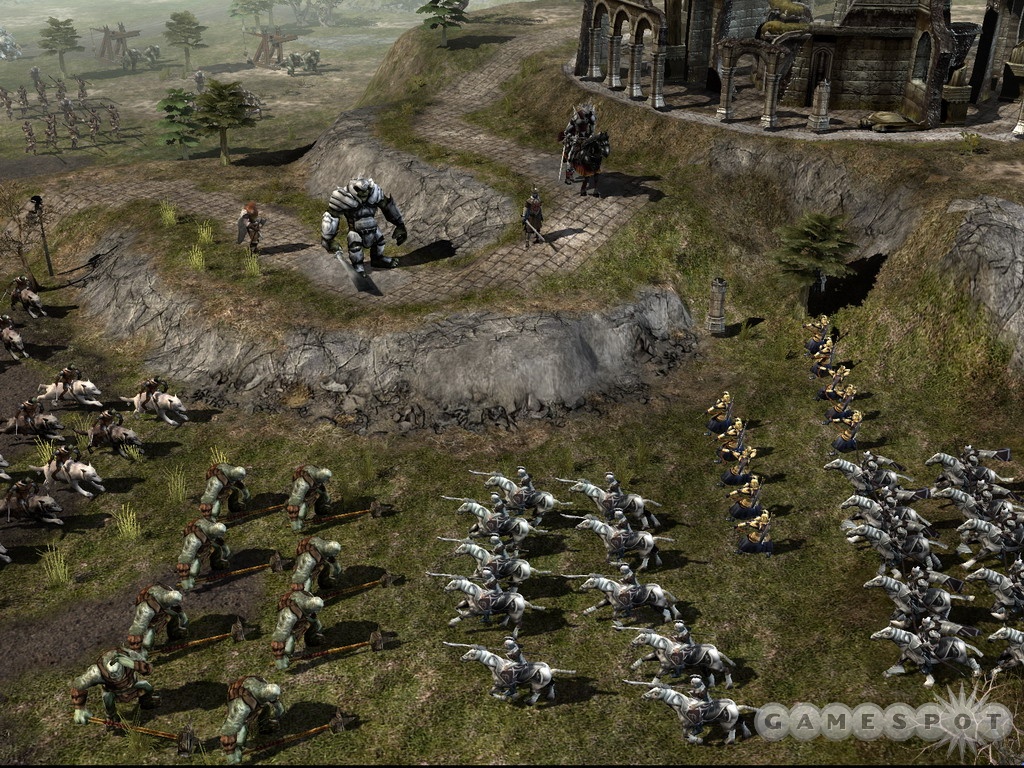
GS: Will the multiplayer let you control any of the factions? Will you stick mainly with the familiar modes seen in the PC version of Battle for Middle-earth II, or will you introduce some of the fun new modes that were introduced in the Xbox 360 version, such as resource race and king of the hill?
AR: The Angmar faction will be available in multiplayer. Though we are not going to include the multiplayer game modes that exist in the Xbox 360 version, the multiplayer experience will be significantly enhanced. Two major additions to the multiplayer experience in The Rise of the Witch-King are more than a dozen new maps to play on and more than a dozen new units that have been added to each of Battle for Middle-earth II's existing factions.
GS: Thank you.
Got a news tip or want to contact us directly? Email news@gamespot.com
Join the conversation